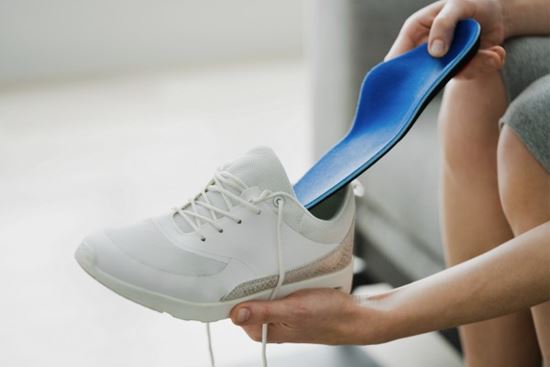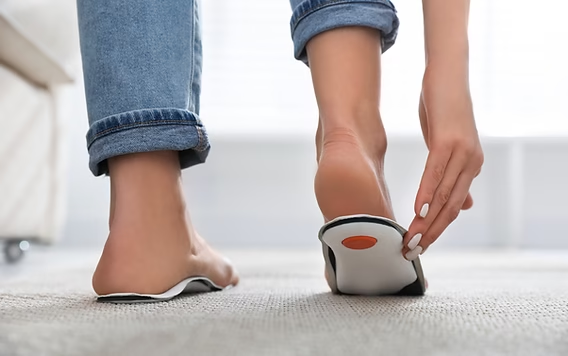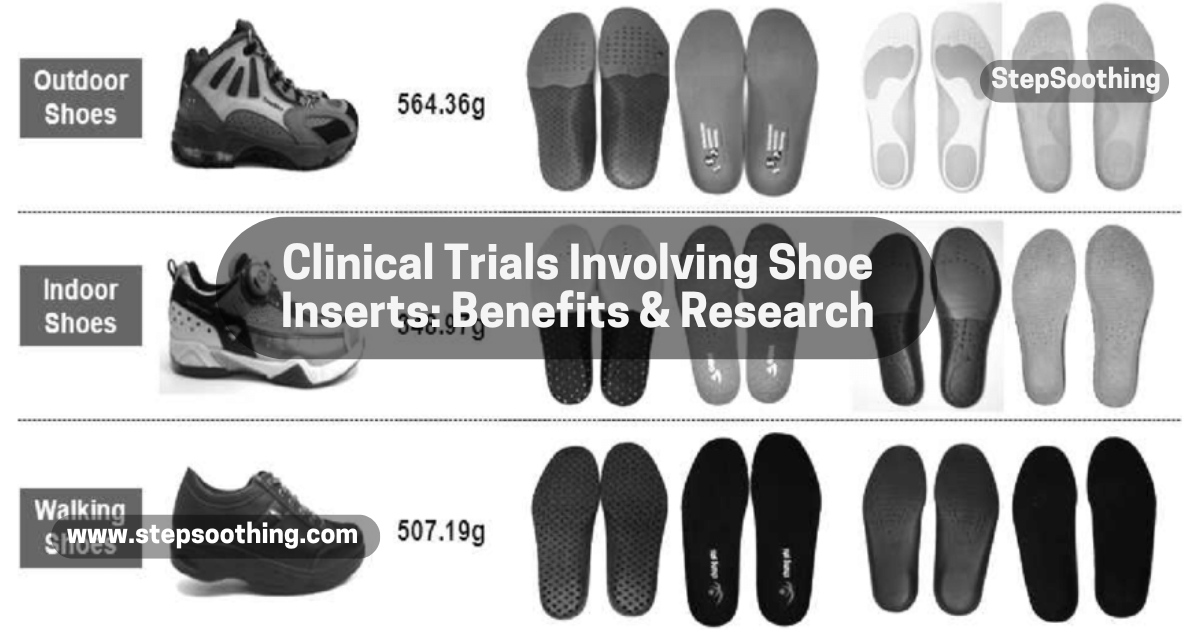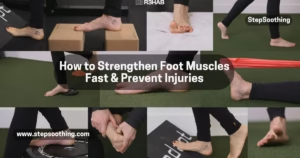Clinical trials involving shoe inserts help determine their effectiveness in improving foot support and comfort. Shoe inserts, also called insoles, come in two main types: custom orthotics, designed for an individual’s foot, and off-the-shelf inserts, which are mass-produced for general use. While some people use them for comfort, others rely on them for medical reasons, such as relieving pain from plantar fasciitis, arthritis, or diabetes-related foot issues.
The demand for shoe inserts has increased, especially among athletes, elderly individuals, and people who stand for long hours at work. They help in shock absorption, pressure distribution, and posture correction. However, before they are widely recommended by doctors, clinical trials involving shoe inserts must confirm their effectiveness and safety.
Clinical Trials Involving Shoe Inserts

The Role of Clinical Trials in Shoe Insert Research
Clinical trials are essential for testing how well shoe inserts work. They help researchers understand whether an insole actually reduces pain, improves walking posture, or prevents foot injuries.
For a trial to be considered reliable, it must follow strict guidelines. A well-designed study includes:
- A proper sample size (enough participants to get accurate results).
- Control groups (some people use the insert, while others do not, for comparison).
- Statistical significance (ensuring results are not due to chance).
Regulatory bodies like the FDA (Food and Drug Administration) in the U.S. and European CE certification ensure that shoe inserts used for medical purposes meet safety standards before being marketed to the public.
Related Article: Evidence-based benefits of using insoles
Key Research Areas in Shoe Insert Clinical Trials
Clinical trials focus on different areas to test the benefits of shoe inserts:
- Gait & Biomechanics Improvement – Researchers study whether inserts improve walking patterns, balance, and posture. Poor posture can lead to back, knee, and ankle pain.
- Injury Prevention – Studies look at how inserts help prevent stress fractures, shin splints, and joint injuries in runners and athletes.
- Pain Management & Foot Health – Shoe inserts are tested for their ability to relieve pain in conditions like plantar fasciitis, osteoarthritis, and neuropathy.
- Diabetic Foot Care – People with diabetes often develop foot ulcers due to poor circulation. Clinical trials examine whether insoles help prevent these ulcers and improve blood flow.
Notable Clinical Trials & Research Findings
Many clinical trials have studied the benefits of custom-molded insoles vs. off-the-shelf inserts.
A randomized, controlled trial compared custom orthotics with store-bought insoles for patients with plantar fasciitis. After 12 weeks, participants with custom inserts reported greater pain relief and better walking function.
However, gaps in research still exist. More studies are needed to examine:
- Long-term effects (Do inserts still work after 1-2 years of daily use?)
- Effectiveness in different populations (How do they help older adults vs. athletes?)
Related Article: Latest studies on Insole effectiveness
Factors Influencing Clinical Trial Outcomes
Several factors can affect how well shoe inserts work in a study:
- Patient-Specific Variables – A person’s age, weight, foot shape, and activity level all impact results.
- Material & Design – Different materials (foam, gel, plastic, or carbon fiber) provide varying levels of comfort and durability.
- Compliance & Usage Patterns – If participants do not wear the inserts as instructed, results may be inaccurate.
- Placebo & Control Groups – Some trials use a sham insert (one with no actual benefit) to test if people feel better just because they expect to.

Challenges in Conducting Shoe Insert Clinical Trials
Testing shoe inserts in a clinical setting is not easy. Some common challenges include:
- Study Variability – People have different walking styles, foot shapes, and medical conditions, making it hard to standardize results.
- Funding & Industry Bias – Some trials are funded by manufacturers, which can lead to biased results in favor of their product.
- Long-Term Studies – Most research only tracks results for a few months. More long-term studies are needed to assess durability and effectiveness over years.
Related Article: Research on orthotics and knee pain relief
Future Trends & Innovations in Shoe Inserts
The future of shoe inserts is exciting, with new technology and materials improving how they function:
- AI-Driven Custom Orthotics – Artificial intelligence (AI) now helps create perfectly shaped inserts based on foot scans.
- 3D Printing – This technology allows for fast, cost-effective production of custom insoles tailored to an individual’s foot.
- Smart Insoles – Some high-tech insoles come with sensors that track pressure points and movement in real-time, helping athletes and people with medical conditions.
These innovations make custom-molded insoles more precise, affordable, and accessible.
Final Thoughts
Clinical trials have proven that shoe inserts help with foot pain, posture correction, and injury prevention. While custom orthotics tend to provide better results than off-the-shelf insoles, more long-term studies are needed to fully understand their impact.
For now, people with foot pain, diabetes, or posture issues should consult a specialist to find the best shoe insert for their needs. With technology improving, the future of shoe inserts looks promising for both athletes and individuals with foot conditions.
Related Article: Expert opinions on insole use
People Also Asked on Clinical Trials Involving Shoe Inserts
Do shoe inserts really help with foot pain?
Yes, clinical trials have shown that custom-molded insoles provide better arch support, pressure redistribution, and shock absorption, reducing foot pain caused by plantar fasciitis, arthritis, and flat feet. However, the effectiveness depends on the material, design, and the specific condition being treated.
Are custom-molded insoles better than store-bought ones?
Studies indicate that custom-molding insoles are generally more effective for foot health, posture correction, and pain relief than ready-made insoles. They are designed based on an individual’s foot shape and pressure points, whereas store-bought inserts provide general support that may not work for everyone.
How do clinical trials test the effectiveness of shoe inserts?
Clinical trials involve randomized, controlled studies where participants use either a custom insole, a store-bought insert, or a placebo insert. Their pain levels, walking patterns, and foot fatigue are measured using tools like the Visual Analog Scale (VAS) score. Significant results (p = 0.0001, p = 0.0002) confirm the insole’s effectiveness.
Who should use shoe inserts?
Anyone experiencing foot discomfort, joint pain, or posture issues can benefit from shoe inserts. They are especially useful for:
- Athletes (reducing impact injuries and improving balance)
- Workers standing for long hours (reducing foot fatigue)
- People with diabetes (preventing foot ulcers and improving circulation)
- Older adults (providing ankle support and stability)
What are the latest innovations in shoe inserts?
The future of shoe inserts includes AI-driven custom orthotics, 3D-printed insoles, and smart insoles with real-time tracking of foot pressure. These advancements allow for better fit, improved durability, and personalized foot care, making inserts more effective and accessible for a wider range of people.



